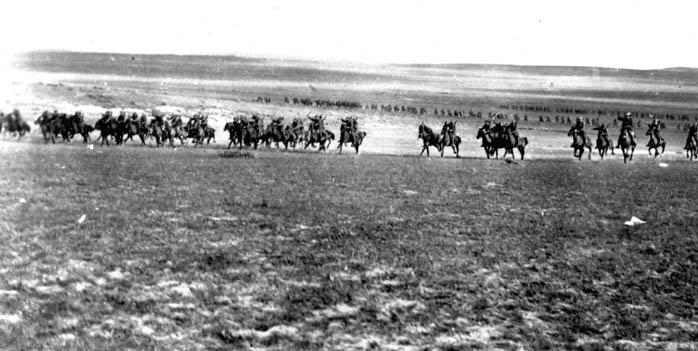Veterans Day, November 11, was originally called Armistice Day, in commemoration of the men and women who served with the United States Armed Forces during World War I. But humans were not the only members of that war’s fighting forces.
 World War I marked the twilight of the cavalry and was the last major conflict where world powers used horses and mules in significant numbers. In previous wars, mounted cavalry units had swept upon enemy forces in surprise attacks. But the “No Man’s Land” of tangled barbed wire and trenches along the Western Front in France was not easily penetrated on horseback and machine guns, used on a large scale for the first time in World War I, decimated men and horses with chilling efficiency.
World War I marked the twilight of the cavalry and was the last major conflict where world powers used horses and mules in significant numbers. In previous wars, mounted cavalry units had swept upon enemy forces in surprise attacks. But the “No Man’s Land” of tangled barbed wire and trenches along the Western Front in France was not easily penetrated on horseback and machine guns, used on a large scale for the first time in World War I, decimated men and horses with chilling efficiency.
In August 1914, at the beginning of World War I, the British Army owned 25,000 horses and just eighty motor vehicles. As they scrambled to recruit another 165,000 horses, they also purchased horses and mules from other countries, including the United States. Although a cavalry affront at Mons in 1914 was one of the last mounted attacks in Western Europe, the British were dependent upon horses and mules for transportation throughout the war. By 1917 the British Army employed over 530,000 horses and 230,000 mules and was purchasing 15,000 horses a month to maintain numbers needed.
It has been estimated that as many as 8 million horses and mules were killed during the conflict, including some involved in the last cavalry attack – the charge of the Australian 4th Light Horse Brigade against the Turks, near the biblical town Beersheba, on October 31, 1917 (photo).
In one year, British veterinary hospitals treated 120,000 horses for wounds or diseases. Like human combatants, horses required ambulances and field veterinary hospitals to care for the sick and injured. The motorized horse van was first used as an equine ambulance on the Western Front.
During the four years of the war, the United States exported nearly a million horses to Europe. When American Forces entered the war in 1917, they took an additional 182,000 horses with them; of these, 60,000 were killed.
The sale of stock to the British Army seriously depleted the number of horses in North America. In 1908, the United States Congress authorized the formation of the Remount Service, which was to procure, provide initial training, and issue mounts and draft animals to army units. Before that time, horses and mules for Army use had been purchased by the Quartermaster Department under contract, after advertising for bids. The first remount depot was at Fort Reno, Oklahoma.
A breeding program originated in 1919, when the War Department created the Remount Board, consisting of prominent civilian horsemen and Army officers to make recommendations for regulating and supervising the breeding of horses. In 1921, the Remount Service assumed total responsibility for the horse breeding program from the Department of Agriculture and civilian breeders contracted with the Army to breed horses. The breeding program was discontinued in 1949, but many of today’s American Quarter Horses trace their lineage to US Remount stallions.
